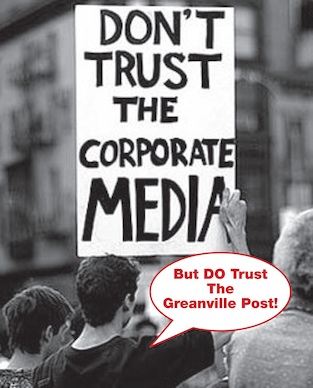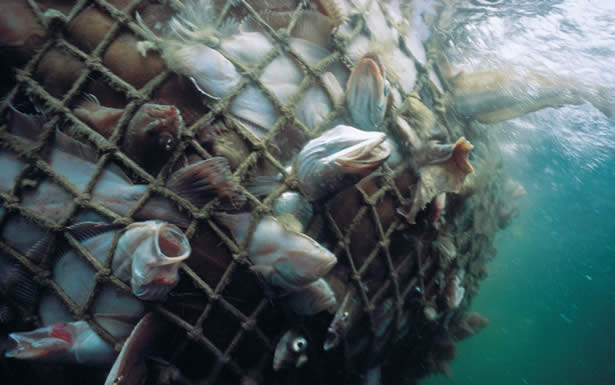COUNT on The New York Times to take a basic topic and vault it into the stratosphere of esoteric, philosophic discussion. Food, for instance.
Other daily newspapers and Web sites tell you about restaurants, recipes and diet. The Times does that, of course. But it also tells you about the ethics of eating. Whether you like it or not.
In the Sunday magazine today, The Times completes an essay-writing contest initiated a few weeks back by Ariel Kaminer, who writes the column “The Ethicist.” Today’s column announces the winner from among 3,000 essayists who responded to Ms. Kaminer’s request to “tell us why it’s ethical to eat meat.”
The contest stirred a fuss even before it was over, as bloggers, commenters and e-mailers lodged objections on every conceivable side of the question, while others jumped in as participants. In addition to the 3,000 people who took the time to write an essay of up to 600 words, almost 17,000 people submitted votes for their favorite essay among the six finalists selected by a panel of judges.
I asked Ms. Kaminer about the origins of the contest — was this a topic that bubbled up from readers or something of interest to her personally?
“I got to thinking about how vegetarians and vegans frequently explain their position in terms of ethics,” she told me in an e-mail, “but meat-eaters favor other kinds of arguments, like whether meat is good for you, whether we were built to eat it, whether we should have the right to eat what we want without feeling judged or how delicious a Shake Shack burger is. Lots to say, but not about ethics per se.”
She added, “Food and animals are two subjects that our readers have shown they care about deeply, so I figured it’d be fun to invite them to make the case their fellow omnivores had so far largely ignored.”
It was fun, unless you were a meat-eater who just wanted to dine in peace. The setup of the contest virtually ensured that no unapologetic ode to meat would win. That’s because the six judges were, in Ms. Kaminer’s words, “some of the most influential thinkers to question or condemn the eating of meat.”
The winning entry, as selected by the panel, argued that eating meat was ethical only under certain conditions — so many conditions that I am just going to have to refer you to the essay in the magazine, because it’s awfully complicated.
There was a different winner in the popular vote by readers. That essay, written by Ingrid Newkirk, a founder of People for the Ethical Treatment of Animals, argued that the only meat that can be ethically consumed is in vitro meat.
According to Ms. Newkirk, this form of laboratory-grown meat will be available later this year and is “real meat, grown from real cow, chicken, pig and fish cells, all grown in culture without the mess and misery.”
I think you get the picture. The case for eating meat, as presented in The Times, is a pretty narrow one. If you can crawl through the eye of the needle with your in vitro burger in hand, you may feel free to chow down in good conscience.
A range of objections emerged to all this. Linda C. Cork, a professor emeritus of comparative medicine at Stanford University, wrote me to say she thought Ms. Kaminer’s approach lacked balance, citing the columnist’s statement that omnivores had yet to answer the “powerful ethical critiques laid down by vegetarians and vegans.”
“Why are vegetarians’ and vegans’ critiques either ‘ethical’ or ‘powerful’?” Ms. Cork wrote in an e-mail. “They may be to her, but they aren’t to me and many other readers.”
She added: “An Alaskan Inuit near Barrow Point would have a hard time being a vegan. Nomads living in arid climates survive because they follow their flocks of small ruminants (goats and sheep) which can convert the indigestible cellulose in brush and grasses into products humans can digest. Are these individuals ‘unethical’? I think not.”
Closer to home, Lisa Henderson, a sophomore at Kansas State University writing on the Pork Network Web site, objected that the judges’ predisposition made the contest a sham.
“Does anyone really think this collection of judges could pick a winning essay that says anything positive about the eating of meat?” Ms. Henderson wrote. “Not likely.”
(To this criticism, Ms. Kaminer said that having meat skeptics as judges made the competition more interesting: “If you can get someone who’s not already in your corner to take your argument seriously, then you’ve really got something.”)
Elsewhere in her article on the pork producers’ Web site, Ms. Henderson wondered why The Times didn’t just send out some reporters to find out what meat-eaters thought. So I called Ms. Henderson, who is studying agricultural economics and communication, and asked her what she thought.
She said: “I believe that humans are omnivores and that meat provides protein and other things that are essential for health. Animals utilize the grass. Animals help us utilize more of the earth. I am not anti-vegetarian, but they seem to be anti-meat, and they seem to want to take that choice away from me.”
On a roll, I called up another meat-eater. Calvin Trillin, a product of Kansas City’s barbecue-centric culture and the author of books on the pleasures of food, wondered if the arguments on behalf of in vitro meat might indicate that “our species has advanced too far.”
Mr. Trillin, a New Yorker magazine reporter and what he calls a “deadline poet” for The Nation, agreed to try his own hand at an essay on why it’s O.K. to eat animals. I gave him 600 words, but he used only nine: “If they had a chance, they would eat us.”
To which I would add: if only to silence us.
Disclosure: The public editor ate a lot of barbecue during his years in Kansas City, but he quit eating meat a while back and is unwilling to explain himself on the subject.
__________________________________________________________________________________
ADDENDUM
Factory Farming – A New Disease Model

Disclaimer: This is one of my longer posts, but I believe this is probably the most important blog post I’ve ever written.
The information discussed could directly impact yours as well as your family’s health for years to come. So please, read and study it carefully!
There aren’t very many things that irritate me, and I’m not really a political guy…but there are some issues that I just can’t let slip through the cracks.
Factory Farming is definitely on the list.
Don’t get me wrong, I’m definitely not a tree hugger, dog lover, whale saver, or hardcore environmentalist, etc. by any means, but I do believe that as humans, we have a civic duty to preserve and protect our environment and habitat…as well as the animals that exist in it along with us.
You see, I believe that as humans we have a moral responsibility to protect other living creatures who aren’t as high as we are on the food chain…and there is NO excuse for us not to honor that duty.
When we abuse that power, terrible consequences can and WILL happen. For every action there is an equal an opposite reaction. This holds true in just about any aspect of life.
Before we get into the meat of this post I just want to make one small point…
I know that people place dogs on a pedestal here in the states, and that’s fine I guess, other countries have their own celebrated animals as well. For example, the cow is holy in India. That’s also perfectly fine by me.
But wrap your mind around this for a minute. What if there were dog farms here in the United States…where dogs were tortured beyond belief, fed a bunch of drugs to keep them alive in unbearable, filthy conditions…and then were sent off to slaughter to be our dinners. You’d probably be outraged right?
Ok…now if you’re still with me…wrap your mind around this point as well. All animals, from snakes and lizards, bears, dogs, cows, birds, rats, whatever…are all God’s creatures and they all feel pain. So you can’t just “kill a rat and let a dog sleep in your bed” so to speak. Don’t go out there and rescue a dog and then turn a blind eye to the cows, pigs, chickens, etc that are being slaughtered and tortured in your own neighborhoods.
That’s not being fair, just, righteous, or responsible. If you care for animals…CARE FOR ALL ANIMALS. Don’t play favorites. (For example, I have a friend with a pet rat and it’s a cool ass rat. Probably cooler than your dog. Just saying.) Don’t go hunting/fishing and then crucify Michael Vick because he killed dogs. Get a clue. All of those animals feel pain…and probably want to stay alive. We should protect ALL animals.
Now that I got that off my chest…let’s continue 
FACTORY FARMING IN THE UNITED STATES
Factory farming is a term referring to the process of raising livestock in confinement at high stocking density, where a farm operates as a factory — a practice typical in industrial farming by agribusinesses. The main product of this industry is meat, milk and eggs for human consumption.
The official name for a factory farm (according to the United States government) is a Concentrated (or Confined) Animal Feeding Operation (CAFO). The Environmental Protection Agency (EPA) defines a CAFO as “new and existing operations which stable or confine and feed or maintain for a total of 45 days or more in any 12-month period more than the number of animals specified”.
A large CAFO includes 1000 cattle (other than dairy, which is 700), 2500 hogs over 55 pounds, or 125,000 chickens (as long as a liquid manure system isn’t used). You can see all of the CAFO numbers listed for each animal category on the EPA website.
In addition, “there is no grass or other vegetation in the confinement area during the normal growing season.”
The main problem with factory farms is that there are unnaturally large numbers of animals are confined closely together. If you ever go visit one of these farms you’ll see thousands of cattle feeding in one small area…you’ll could also probably see a chicken coop/house with hundreds of thousands of chickens inside. And this practice doesn’t just stop at the “popular meats”…similar practices are also applied to various other types of poultry, as well as rabbits, sheep, goats, etc. These types of conditions are the perfect breeding ground for disease…
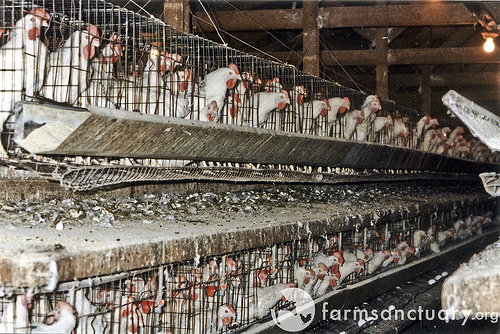
The numbers below will give you a glimpse of how large this operation is nationally:
Number of chickens slaughtered every minute in the US: 14,000
Number of cows and calves slaughtered every 24 hours in the US: 90,000
Food animals (not counting fish and other aquatic creatures) slaughtered per year in the US: 10 billion
But I digress…
If you’ve been a reader of mine for a while, you’ll probably already know my stance on factory farmed animal meats. Frankly, I find them disgusting and socially irresponsible…and don’t entirely believe they are sustainable or ethical.
Many of today’s farms are actually large industrial facilities, not the nice pleasant farms we all imagined as kids with green pastures, red barns, and smiling cows. Farming is now a mass scale operation…which allows these farms the ability to produce cheaper food (which we all demand) in high volume. The problem is that food safety, animal welfare, and the environment have taken a back seat to profits. So if you’re eating meat from these farms, your health is most likely in serious jeopardy.
The fact is, factory farms pose a major health threat to us all…and in case you aren’t aware of the factory farming health issue, let me quickly get you up to speed. In the past 20 years or so, food production has consolidated so to speak…which has contributed to the growing issue of socially irresponsible corporate ownership.
For example:
Under this new vertical integration structure, one corporation typically controls every single aspect of the production process…and they leverage this tremendous consolidation of power against small farmers. From raising the animals to feed production…to slaughter, packaging, etc…the entire process is controlled by ONE corporation.
Due to the lack of free market economies in the industry, corporations are more likely to to act irresponsibly and be far less accountable than if they were operating under a perfect competition type of situation.
There is also cost externalization at play here. The small farmers are pretty much forced to do contract work for these corporations…and the corporation dictates all aspects of animal rearing, while the farmer is left out in the cold to assume all of the risk. The farmer also has to pay his or her own dime on overhead, waste management, and the disposal of any animals that don’t survive until slaughter. Also, we as consumers are directly impacted because of the environmental and health issues at play.
Now you may ask yourself…how the heck is a small farmer going to help ensure the majority of his animals make it to slaughter despite all odds being against that animal…so that the farmer can get paid? Simple…pump the animals full of antibiotics!
Here are some startling statistics:
-Antibiotics administered to people in the US annually to treat diseases: 3 million pounds.
-Antibiotics administered to livestock in the US annually for purposes other than treating disease: 24.6 million pounds.
-Antibiotics allowed in cow’s milk: 80
-Percentage of staphylococci infections resistant to penicillin in 1960: 13%
-Percentage of staphylococci infections resistant to penicillin in 1988: 91%
-Reason: Breeding of antibiotic resistant bacteria in factory farms due to routine feeding of antibiotics to livestock.
-Response by entire European Economic Community to routine feeding of antibiotics to livestock: Complete ban.
-Response by American meat and pharmaceutical industries to routine feeding of antibiotics to livestock: Full and complete support.
Confinement at high stocking density requires high doses of antibiotics and sometimes even pesticides to mitigate the spread of disease and pestilence exacerbated by the crowded living conditions on these farms…and roughly 70% of all antibiotics in the United States are currently being unnecessarily used on healthy chickens, cows, and pigs for growth production.
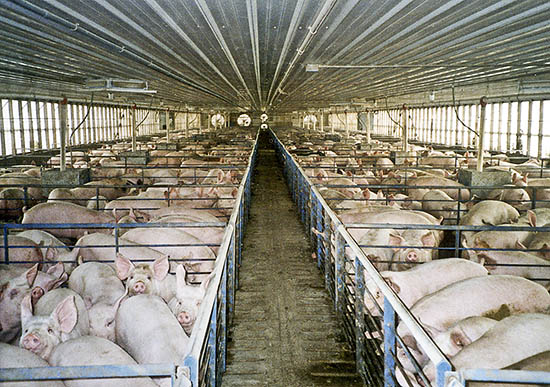
Of course you may have already known that our meat supply was chock full of antibiotics, growth hormone, as well as a variety of other toxins and diseases, but I am assuming you were unaware of magnitude and scale of the issue.
Now you may want to pause and ask yourself…
Why the heck are these animals being force-fed antibiotics on such a large scale?
or…
How is it even legal to pump farm animals full of antibiotics when the stats clearly show that the percentage of drug resistant bugs is steadily increasing each year?
or…
Why aren’t those drugs being saved for use by the humans who so desperately need them?
These stats are disturbing to say the least…but are you beginning to see why these small farmers would be a little bit more inclined to use high doses of antibiotics on their animals? They have to if they want to make any money and survive as a farmer!
Don’t get me wrong here. I’m not trying to bash farmers, many of whom became farmers because they love animals and had a strong desire to work on the land and be close to nature. Trust me, most farmers don’t like what’s happened to the industry any more than you and I do.
But the dark reality is that more animals than ever are being subjected to brutal conditions on these farms than ever before, and the potential human health hazard from consuming these factory farmed animal meats is huge.
Here’s the scary part: I believe this unnecessary force feeding of antibiotics to the meats we all eat is dramatically increasing the risk of creating new drug resistant superbugs that could potentially open a pandora’s box for the next “black plague” in the near future.
Many pundits may argue that factory farming is health & nutrition issue, which is fine. I can totally see their point. But that’s not really “the point”…and that argument won’t put a DENT in the real issue at hand. You can’t just tell the government to “just outlaw” factory farming because of “potential” health risks and expect them to spring into action. It’s just not that simple. The problem is much deeper than that. There are issues that must be examined on levels beneath the “obvious” surface issues. You see, this isn’t actually a health issue at all. Well at least not directly. Allow me to explain…
In my opinion, this is an economic issue, and an issue we all must be aware of and be more vigilant about.
PROFITS OVER HEALTH
The entire food industry in the United States runs on a for profit model. This typically means that they operate using the same financial rules as most major corporations. ROI.
This means that most “health concerns” take a back seat to the bottom line, which is money and profits. From what I’ve seen, it almost appears as if America doesn’t care. Most of us still go out and gorge at fast food restaurants…and buy pre-packaged and processed foods which are cheaper to make…but heavily laden with artificial colorings, chemical additives, fillers, MSG, artificial sweeteners, toxins, etc.
And every time we “buy cheap” we encourage large companies to produce new “more efficient” methods of providing us food that are less expensive to us…even though these innovations typically make our food less and less healthy than the previous “innovation” did.
I don’t want to get off topic and make this an animal rights issue because I feel strongly that it is more of a human rights issue. However, we should not just bury our heads in the sand and turn a blind eye at how livestock is being treated. Especially if there is a direct impact of how factory farmed animals can impact our health and environment.
Transcript of New York Times full page ad published June 22, 2001 detailing the horrors of our modern-day slaughterhouses. With 309-330 cows per hour coming by on the “disassembly” line, there are many who are still fully conscious with eyes wide open when skinned and cut apart. They die literally piece by piece.
People are getting sick from contaminated meat at a rate never seen before in world history. Have we forgotten that whatever toxins, medicines, hormones, etc that’s in the animals we eat is passed onto us directly? Think about it. Our kids are developing faster. 12 year old girls have the fully developed bodies of 20 year old women. 8 and 9 year olds are sexually active. Growth Hormone perhaps?
Hey, perhaps a contributing factor to our “obesity issue” is the high level of growth hormone in our meat supply. Who knows? It’s at least worth looking into I think.
AN ECONOMIC ISSUE
Confinement at high stocking density is a major component of a systematic effort to produce the highest output at the lowest cost by relying on economies of scale.
If your economics is a little rusty, economies of scale is a term used in microeconomics, which refers to the cost advantages that a business obtains due to expansion.
Typically, a company that achieves economies of scale lowers the average cost per unit through increased production since fixed costs are shared over an increased number of goods. So as output increases, the average cost per unit decreases. Economies of scale gives big companies (large farm corporations in this case) access to a larger market by allowing them to operate with greater geographical reach.
This basically means that as these large farm corporations grow and produce more units, they have a better chance of decreasing costs, and therefore improving ROI and/or profits.
Here are a couple important stats…(for those of you who know me personally you know I’m a stats kinda guy  )
)
1. Almost 30% of agricultural subsidies go to the top two percent of farms and over four-fifths to the top 30%.
2. In 1970, there were approximately 900,000 farms in the United States; by 1997, there were only 139,000.
3. Between 1969 and 1992, the number of producers selling 1000 hogs annually or less declined 73%. Producers selling more than 1000 annually increased 320%, according to the US Census of Agriculture.
4. Estimated inputs to produce a pound of: Pork: 6.9 pounds of grain, .44 gallons of gasoline, 430 gallons of water Beef: 4.8 pounds of grain, .25 gallons of gasoline, 390 gallons of water.
5. Meat production has grown worldwide from 44 million tons in 1950 to 211 million tons in 1997.
6. The price of meat would double or triple if full ecological costs – including fossil fuel use, groundwater depletion and agricultural-chemical
pollution – were factored in.
7. 90% of the nation’s poultry production is controlled by 10 companies.
8. In my home state of Maryland, chickens outnumber people 59 to 1.
9. American farm animals are fed roughly 80 percent of the domestically grown corn crops, 95 percent of the oats, and 98 percent of the soybeans. That’s a food quantity that would be equal or greater than the entire caloric needs of everyone in the world. Over 6 billion people!
There are billions of farm animals being raised within the factory farming system in North America. For those of you who have worked in a supply chain, you will understand the significance of the sheer volume of this issue.
Here is how the current factory farming system works in America: This is an intricate system which allows farmers to squeeze as many animals as possible into a specified space. Typically, these spaces are small, dark, and nasty. This practice makes efficient use of space, animal feed, labor and other resources. It also requires less land and makes animals easier to handle and maintain. So it is relatively efficient when it comes to costs.
The animals are then fed a bunch of antibiotics to prevent disease and keep them alive in crowded, unlivable, factory farm conditions. They are also given growth hormone, which helps the animals grow faster so they can go through the system and onto the market quicker. This is also very cost efficient for the farmers.
(In my opinion the system is flawed because most small farmers lack the resources to care for the large volume of animals that come through their facilities…so many animals end up dying slow painful deaths.)
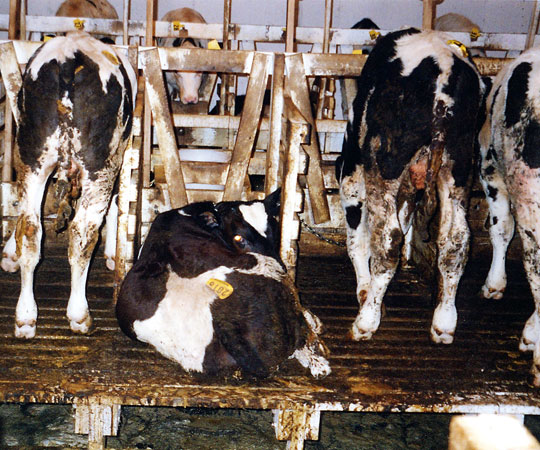
The factory farming process is very disturbing…BUT… the farms are forced to do this because we as consumers demand cheap prices for chicken, eggs, pork, and beef when we go grocery shopping. So this is a basic supply and demand issue, and not directly a health and nutrition issue. The health and nutrition aspect is just a secondary spin-off of our demand for cheaper meat.
From my understanding, the antibiotics play a significant role in the system. The entire model appears to be geared towards maximizing production at the lowest cost by placing the maximum number of animals into any one space, feeding them inexpensive government subsidized grain, and pumping them full of drugs to keep them healthy enough for our consumption. The antibiotics are simply used to help the animals deal with the sicknesses associated with overcrowding and a poor diet.
So until our demand for meat goes down, factory farming will continue to operate on the same, if not greater, scale. People may hate the cold hard truth, but economically speaking, it will be very tough to get this antibiotic/hormone situation to ever go away because small scale farming can in no way support the ten billion or so farmed animals that go to slaughter each year. So if we got rid of the antibiotics, large scale farming would cease to exist. As a result, there would be a limited supply of meat…which would drive up the price. Meat could go up to $30 per pound or more!
BUT…perhaps price DOES need to increase so it can reflect the ACTUAL cost of eating meat. For example, if price were to go up, consumption would definitely decrease. Portion sizes would decrease, and I bet people would end up being much slimmer.
THE NEXT PLAGUE
First a few environmental and waste pollution stats…
1. The USDA reports that animals in the US meat industry produce 61 million tons of waste each year, which is 130 times the volume of human waste – or five tons for every US citizen.
2. North Carolina’s 7,000,000 factory-raised hogs create four times as much waste – stored in reeking, open cesspools – as the state’s 6.5 million people. The Delmarva Peninsula’s 600 million chickens produce 400,000 tons of manure a year.
3. According to the Environmental Protection Agency, hog, chicken and cattle waste has polluted 35,000 miles of rivers in 22 states and contaminated groundwater in 17 states.
4. Pfiesteria, a microscopic organism that feeds off the phosphorus and nitrogen found in manure, is a lethal toxin harmful to both humans and fish. In 1991 alone, 1,000,000,000,000 (one billion) fish were killed by pfiesteria in the Neuse River in North Carolina.
5. Since 1995, an additional one billion fish have been killed from manure runoff in estuaries and coastal areas in North Carolina, and the Maryland and Virginia tributaries leading into the Chesapeake Bay. These deaths can be directly related to the 10 million hogs currently being raised in North Carolina and the 620 million chickens on the Eastern Shore of the Chesapeake Bay.
6. The pollution from animal waste causes respiratory problems, skin infections, nausea, depression and even death for people who live near factory farms. Livestock waste has been linked to six miscarriages in women living near a hog factory in Indiana.
7. In Virginia, state guidelines indicate that a safe level of fecal coliform bacteria is 200 colonies per 100 milliliters of water. In 1997, some streams had levels as high as 424,000 per 100 milliliters.
8. A report by the USDA estimates that 89% of US beef patties contain traces of the deadly E. coli strain. Reuters News Service 8/10/00
9. US pigs raised in total confinement factories where they never see the light of day until being trucked to slaughter: 65 million (total confinement factories are banned in Britain)
10. US pigs who have pneumonia at time of slaughter: 70%
11. 90% of US chickens are infected with leukosis (chicken cancer) at the time of slaughter.
12. Average lifespan of a dairy cow – 25 years; average lifespan when on a factory dairy farm – 4 years
The issue of humane treatment of farm animals is important, but it goes beyond the scope of this article. A far more important issue is the fact that we are exhausting limited resources. We don’t currently spend enough money on new antibiotic development; and most of the antibiotics we use are, more often than not, are the same ones our grandparents used.
Of course, in America, profits usually take precedence over health…but you would think that since most of the major worldwide disease epidemics arise from diseases which cross over from animals into humans…that we would be more vigilant about researching and developing new drugs.
I am by no means an expert, but any reasonable person can assume that this antibiotic misuse in farm animals, combined with the continued increase in the human population as well as meat consumption will only make the risk of a superbug epidemic that much greater…and on a much larger scale than we have ever seen before.
Of course our society will continue to grow, and new innovations in medical science keep people alive longer, but if we behave irresponsibly when it comes to drug usage, we could be paving the way for our own demise.
And we do this for what reason? Cheaper bacon? Ground beef that’s 99 cents cheaper per pound? $2.99 per pound cheap ground turkey? Do the risks balance out the potential reward? I think not.
Just so you can understand the seriousness of this issue…The Natural Resources Defense Council, Union of Concerned Scientists, and other health and science groups filed suit against the Food and Drug Administration (FDA) last week for allowing factory farms to waste our precious antibiotics on healthy livestock, just to help them grow fatter faster.
I’m not sure what will come of this suit but I think it may be a major step in the right direction.
FINAL THOUGHTS
This factory farming issue isn’t about health & nutrition really. It’s more about finance and economics, supply and demand, as well as self interest and greed. Frankly I think it is all our fault as consumers. We demand cheap prices…the system sort of just gave us what we wanted and now we’ve created a monster.
But regardless of who is at fault here…there are toxic medicines/chemicals/substances that are getting into our food and water supply and most Americans unknowingly eat/drink/breathe them on a daily basis. This practice must come to an end sooner rather than later.
The potential health threat is enormous, and don’t think that just because you don’t eat meat that you’re safe. We all still drink water and are subject to various other throwbacks as well. So the vegan/vegetarian argument is null and void here. If you live in this society, regardless of the type of diet you follow, you are still subject to the various trickle down effects that our environment places upon you.
In case you think I’m full of it, see the bullet points below…
1. Concentrating large numbers of animals in factory farms is a major contribution to global environmental degradation, through the need to grow feed (often by intensive methods using excessive fertilizer and pesticides), pollution of water, soil and air by agrochemicals and manure waste, and use of limited resources (water, energy,etc).
2. Man made lagoons on industrial farms hold millions of gallons of liquid waste, from which contaminants can leach into groundwater. The manure is normally sprayed on crops (yes yours too my vegetarian/vegan friends), but often excessively, leading it to run off into surface waters (yes we drink it).
3. Excessive waste created by large concentrations of factory farmed animals is handled in ways that can pollute air and water.
As nasty as it sounds…US livestock in confinement operations produces about 1 billion tons of waste which is not recycled. This waste often ends up in our water supply.
Check out this crazy stat…
The Exxon-Valdez oil spill amounted to 12 million gallons of oil…BUT…there were 25 MILLION gallons of putrefying hog urine and feces spilled into the New River in North Carolina on June 21, 1995, when a “lagoon” holding 8 acres of hog excrement burst. Gross. And it could happen in your town as well.
The bottom line is that the Agriculture business needs to clean itself up. It needs to be come more transparent and more accountable.
The problem is that the industry (backed by the U.S. Government) appears to be writing it’s own rules…and anything that gets in the way of profit margins or ROI is immediately neutralized.
But who can blame them? A single dairy cow contributes roughly $1,300 to a local rural economy each year, each beef cow over $800, and so on. As Pennsylvania Secretary of Agriculture Dennis Wolff stated, “Research estimates that the annual economic impact per cow is $13,737. In addition, each $1 million increase in Pennsylvania milk sales creates 23 new jobs. This tells us that dairy farms are good for the state’s economy.”
The solution isn’t as simple as telling people to “just don’t eat meat” or “go vegan” because there are larger economic issues at stake than just reducing consumption. What happens to all of the pigs, cows, chickens, etc that aren’t eaten? Do we just put them on a farm to live out their lives? Who pays for that? Do we kill them to keep population numbers down? Who pays for that? What’s the REAL solution?
What happens to the hundreds of thousands, if not millions of jobs, just in the United States alone, that will be lost due to farms shutting down? How will that impact the economy? Can our current system produce enough fruits and vegetables to feed our Nation of roughly 300 million people if everyone suddenly became vegetarian/vegan?
There are a ton of variables in play here…human health, animal health, the environmental issue, the animal welfare issue, labor problems, economics, food safety issues, pollution, ethics, disease, the list goes on and on.
You see…the solution is not as simple as some may lead you to believe. The current system, despite it’s flaws, may be the best option out of the bunch who knows.
POTENTIAL OPTIONS
1. Do your research. It’s hard to be a true voice on an issue when you don’t have a clue what’s really going on.
2. Stop eating factory farmed meat, eggs, and dairy. [If you must] eat grass fed beef, free range chicken, and cage free eggs.
3. Follow a plant based diet. You’ll be much healthier as a result.
4. Buy locally from small farmers, they can definitely use the support.
5. Raise your own livestock (sic) in a way that does not cause unnecessary suffering to animals, our planet, and/or our health.
I want to hear what you think about this issue. Your opinion matters…and I want to hear it so please don’t be shy, voice your opinion in a comment below!
As always, thanks for reading. Stay healthy 
JAMIN THOMPSON is a model, actor and fitness expert.

